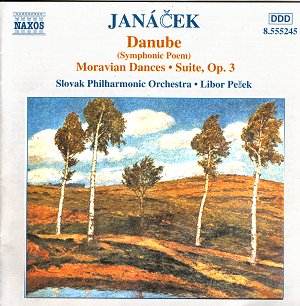 Composer: Béla Bartók (1881-1945), Witold Lutosławski (1913-1994)
Composer: Béla Bartók (1881-1945), Witold Lutosławski (1913-1994)
Works: Concerto for Orchestra (Bartók), Concerto for Orchestra (Lutosławski)
Performers: Royal Stockholm Philharmonic Orchestra, Sir Andrew Davis
Recording: Recorded at Stockholm Concert Hall, Sweden, February and March 1996, DDD
Label: APEX 0927 40619 2
The juxtaposition of Bartók and Lutosławski on this disc presents an intriguing exploration of the orchestral concerto form in the 20th century. Both composers, while separated by just about a decade, exhibit strikingly different approaches to orchestration and thematic development. Bartók’s Concerto for Orchestra, composed in 1943, stands as a testament to his late style, fusing folk elements with sophisticated counterpoint and a vibrant orchestral palette. Lutosławski’s Concerto for Orchestra, written in 1950, marks the early phase of his distinctive post-war voice, characterized by a more modernist aesthetic yet still deeply connected to the orchestral traditions of the past.
Davis’s interpretation of the Bartók reveals a nuanced understanding of its intricate textures, though it occasionally lacks the visceral urgency found in more celebrated performances. The opening movement, which sets the stage with its playful exchanges between sections, should crackle with electricity; however, here it feels somewhat muted. The Royal Stockholm Philharmonic Orchestra plays with commendable precision, yet the performance fails to ignite the distinct Hungarian character that is so vital to this work. For instance, the ‘Giuoco delle coppie’ section, with its playful interplay among the woodwinds, lacks the sharp delineation and rhythmic buoyancy that one hears in Simon Rattle’s interpretation with the City of Birmingham Symphony Orchestra, where each phrase is imbued with palpable energy.
Conversely, the Lutosławski presents a more compelling case, yet it too faces stiff competition from the composer’s own recording. Davis’s reading benefits from an overall refinement and depth, particularly in the climactic moments where the orchestration opens up in a breathtaking display of color and dynamic contrast. The transition at 3’35” following the first movement’s climactic peak, where the horns emerge prominently, showcases Davis’s ability to weave orchestral lines with clarity, though it does not quite reach the electrifying heights of the EMI recording with the Polish National Radio Symphony Orchestra, where Lutosławski himself captures raw energy in a manner that is both immediate and captivating.
Recording quality further complicates the assessment of this collection. The sonic landscape presented here often feels distant, with moments of orchestral brilliance obscured rather than highlighted. The opening string motif in Bartók’s work lacks the incisiveness that is crucial for its impact, reminiscent of a sound lost in the corridors of the concert hall rather than the vibrant immediacy of a live performance. In stark contrast, the engineering on the EMI releases elevates the listening experience, offering a more immersive sound that envelops the listener.
While this super-budget disc could serve as an introductory compilation for those seeking exposure to these significant 20th-century orchestral works, it ultimately does not measure up to the established benchmarks set by other recordings. For those already familiar with Bartók and Lutosławski, the more vivid interpretations by Rattle and the composer himself will resonate more profoundly. This release may present a logical coupling, yet it falls short of engaging the listener in the transformative power of the music, leaving one wishing for greater interpretative vitality and sonic clarity.



